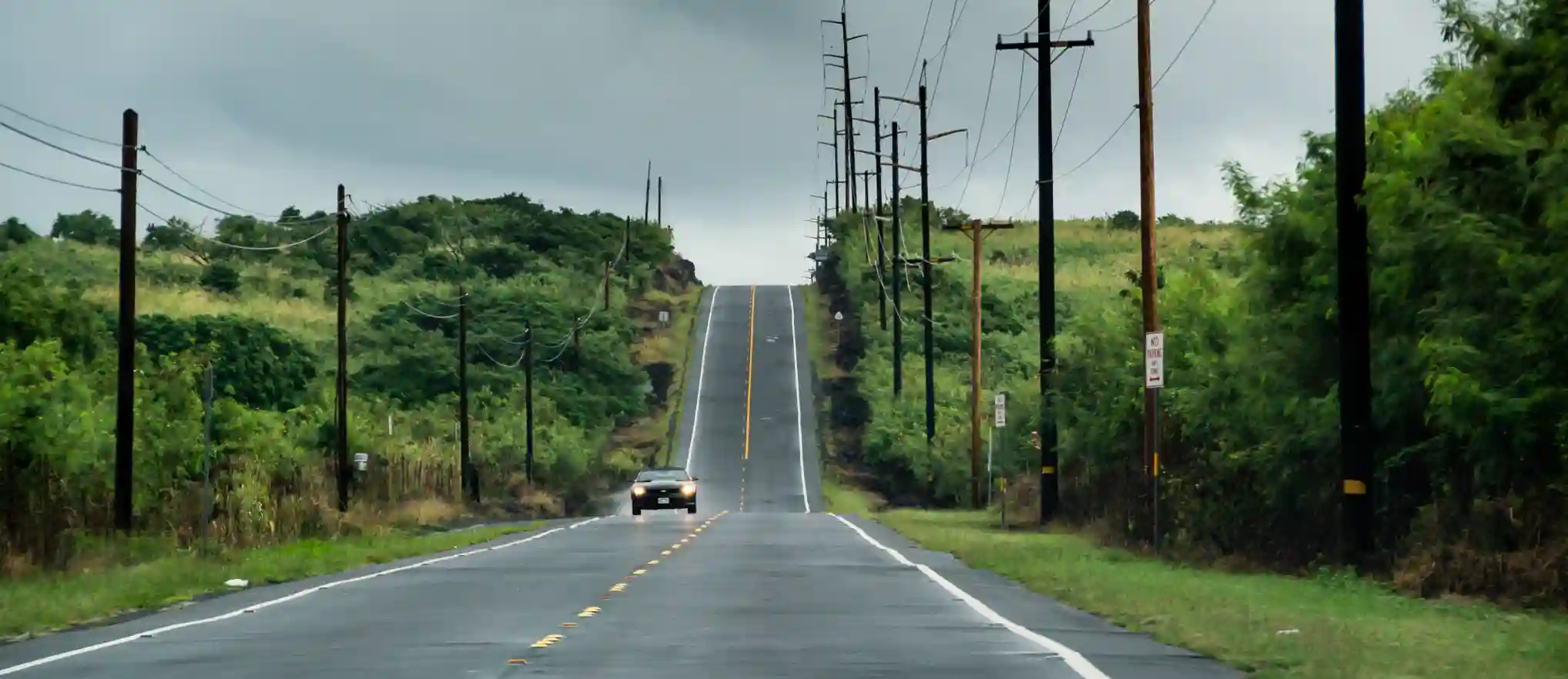A Guide to Hawaii’s Driving Rules and Regulations
Rules for Driving in Hawaii
Hawaii has its own unspoken rules for driving, as the Aloha Spirit is always alive and well in everything Hawaii has to offer. There are also rules that are the law.
Hawaiians believe that one’s actions can have an effect on those around them, and therefore ask that everyone consider their own actions and behavior, showing that you do care how your actions will affect others around you. Driving with Aloha is all about being considerate of others that also occupy the road, as well as those people alongside the roadways.
It is wise to get to know the Hawaii road rules and Hawaii speed limit laws before you enter your rental vehicle and begin your adventure.
Here are some of the official laws/rules for driving in Hawaii:
- The minimum driving age for a fully licensed driver in Hawaii is 17 years, and all drivers must possess a valid U.S. or International driver’s license while operating a motor vehicle in the state.
- Seat belts are mandatory and must be worn at all times within private vehicles. Children weighing less than 50 pounds must be secured in a child safety or booster seat appropriate for their weight.
- Turning right on a red light in Hawaii after coming to a complete stop is permitted unless otherwise indicated, but please be careful, as pedestrians have the right of way at all intersections, and they do take advantage of that.
- You must be 21 years of age to legally drink alcohol in Hawaii, and those found driving under the influence of alcohol or drugs will be arrested. By driving in Hawaii, you have legally consented to blood, urine or breath tests. The legal limit is 0.08%.
- Hawaiian law requires all drivers to use a hands-free device when talking on a cell phone while behind the wheel, although GPS or mapping services are permitted.
- Parking is not always available, or easy to find. Vehicles parked in violation of posted parking regulations are ticketed and almost immediately towed. The curbs are painted with color cues, with red meaning No Parking, green meaning Go, but for a limited time depending on the signage, and while or yellow meaning passenger loading/unloading only.
- Pedestrians have the right of way – drivers always yield to pedestrians. Funeral processions also have the right of way.
- You must signal 100 feet before making a turn or stopping.
- Children under 9 years of age are not allowed to be left unattended in the vehicle.
- U-turns are legal with good visibility, but there are some jurisdictions where they are not allowed.
Hawaii Driving Tips
Here are a few tips to help you consider the Aloha Spirit while driving in Hawaii.
- Hawaii speed limits are a bit slower that you might be used to. School zones are 25 MPH, while driving within city limits is 25-45 MPH, Highways are 45-55 MPH, with Interstate Highways 60MPH. When in doubt about the speed limit, stay below or at the same speed as the cars around you, instead of weaving in and out trying to get ahead. Everyone has some place to get to, and respect for each other matters.
- If you are planning a day trip to do some sightseeing, please do not get distracted by the beautiful surroundings and views that are hard to pass up. Please, if you must have a look, get off the road – find a safe place to pull off and take your pictures, or take in the views. Do not make sudden stops, or proceed very slowly while your passengers take pictures. This is not only dangerous for you and your passengers, but the other motorists on the road as well.
- In Hawaii, car horns are used to greet people, or to offer a thank you. Horns are not used to complain to someone about their driving. Please be patient, allow others to enter traffic in front of you, and drive with Aloha. Hawaii’ Highway Code states that motorists must not aggressively blast their horn without viable and reasonable intention. It is also illegal to sound your horn while driving in built up areas between 11:30 pm and 7 am.
- Rain makes visibility very limited. Some visitors are not familiar with the rain in Hawaii, and how slick the roads become, especially when the rain first starts, as the heat rises from the hot asphalt and cools the roadways. Be careful of hydroplaning, and water rushing across the roads in some places. Hawaii has weather patterns that can change quickly, so it is always important to know what the weather is going to be like, and plan wisely to avoid flooding. Road closures can happen when too much rain arrives quickly. Also, potholes can form, and you need to be vigilant so you do not damage your rental car.
- It tends to take significantly longer to travel anywhere in Hawaii than in other parts of the country. Hawaii has smaller roadways with slower speed limits. If traffic backs up, especially during rush hour, your sightseeing trip could just take longer. Plan your day accordingly to avoid traveling in rush hour, which runs between 6-8:30am and 3-6pm most weekdays in Honolulu. Many roads in Hawaii, especially in some of the more rural areas, are limited to two lanes. Although passing is allowed in some areas, it should be done with extreme caution, especially if you are unfamiliar with the road ahead. Don’t pass more than one car at a time, as you may find a turn in the road ahead with no place to get back in your lane. Caution should be exercised at all times.
Enjoy your stay in Hawaii, and make sure your entire party returns home safely, with many wonderful memories.



